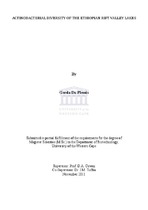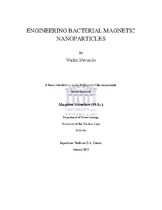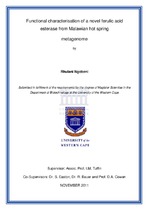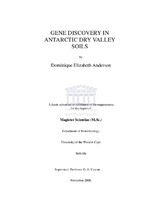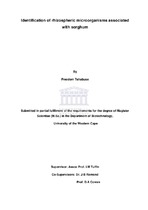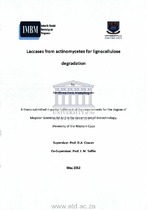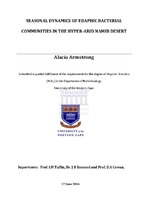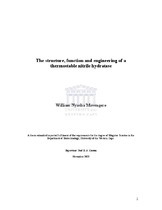Browsing Magister Scientiae - MSc (Biotechnology) by Author "Cowan, D.A."
Now showing items 1-11 of 11
-
Actinobacterial diversity of the Ethiopian Rift Valley lakes
Du Plessis, Gerda (University of the Western Cape, 2011)The class Actinobacteria consists of a heterogeneous group of filamentous, Gram-positive bacteria that colonise most terrestrial and aquatic environments. The industrial and biotechnological importance of the secondary ... -
The diversity of key anabolic genes in antarctic hypolithons
Makhalanyane, Thulani Peter (2009)Antarctica is known for its pristine environments. A variety of unsuitable environmental conditions were once thought to render the continent unsuitable for sustaining life. However, metagenomic data have revealed a wealth ... -
Engineering bacterial magnetic nanoparticles
Nevondo, Walter (University of the Western Cape, 2013)Magnetosomes, produced by magnetotactic bacteria (MTB), are the most attractive alternative source of non-toxic biocompatible magnetic nanoparticles (MNPs). A magnetosome contains Fe2O4 magnetite with properties superior ... -
Functional characterisation of a novel ferulic acid esterase from malawian hot spring metagenome
Ngobeni, Rhulani (2011)There has been a decline in the global fossil fuel reserves, due to an increasing demand for petroleum. Biofuels can be used as an alternative source of energy whereby biomass is converted to liquid fuels such as bioethanol. ... -
Gene Discovery in Antarctic Dry Valley Soils
Anderson, Dominique Elizabeth (University of the Western Cape, 2008)The metagenomic approach to gene discovery circumvents conventional gene and gene product acquisition by exploiting the uncultured majority of microorganisms in the environment. It was demonstrated in this study that ... -
Identification of rhizospheric microorganisms associated with sorghum
Tshabuse, Freedom (University of the Western Cape, 2012)Approximately 50% of sorghum (Sorghum bicolour (L.) Moench) produced globally is used as human food, with 95% of its total consumption occurring in Africa. Unfortunately, sorghum crops are prone to pathogenic attack, notably ... -
Isolation and characterisation of a xylanase producing isolate from straw-based compost
Mutengwe, Rudzani Ruth (University of the Western Cape, 2012)Lignocellulosic biomass, a waste component of the agricultural industry, is a promising source for use in bioethanol production. Due to a complex structure, the synergistic action of lignocellulosic enzymes is required to ... -
Laccases from actinomycetes for lignocellulose degradation
Mamphogoro, Tshifhiwa Paris (University of the Western Cape, 2012)Lignocellulose has a complex structure composed mainly of lignin, hemicellulose and cellulose. Several enzymes are needed for the degradation of lignocellulose into simple sugars. Actinomycetes are known to produce laecases ... -
Screening for fluorescent and chromoproteins from South African sea anemones
Nyman, Tanya (University of the Western Cape, 2012)Sea anemones (Order Actinaria) are a diverse order from the Class Anthozoa. They are found in all marine habitats at all depths and their symbiotic relationships play an important role in energy transfers especially in the ... -
Seasonal dynamics of edaphic bacterial communities in the hyper-arid Namib desert
Armstrong, Alacia (University of the Western Cape, 2014)The aim of this study is to investigate the edaphic bacterial community dynamics over short (57 days) and long-term (1 year) sampling intervals using an extensive sampling strategy in combination with community fingerprinting ... -
The structure, function and engineering of a thermostable nitrile hydratase
Mavengere, William Nyasha (University of the Western Cape, 2008)Nitrile hydratases (NHases) are enzymes that catalyse the conversion of organocyanides to amides via a non-hydrolytic hydration reaction. They are industrially relevant enzymes, currently used in the manufacture of ...

